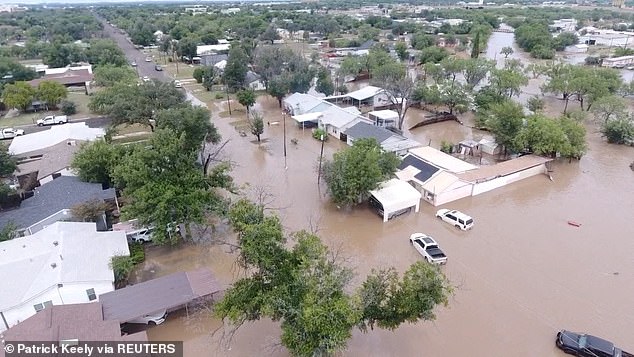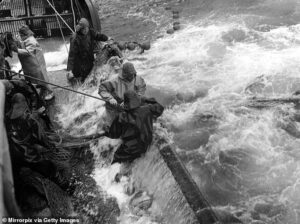
Officials in the Texas county where more than 100 people have died from the July 4 flash flood did not use technology that would have sent Amber Alert-like messages to everyone in the vicinity of the Guadalupe River, according to a bombshell new report.
Kerr County officials did not use the more powerful notification tool they had even after a National Weather Service meteorologist warned them about the potential for catastrophic risk, per The Washington Post.
The meteorologist, identified as Jason Runyen, posted his warnings in a Slack channel that local officials and reporters were in.
He was unfortunately proven right. In the early morning hours of July 4 the river rose at least 30 feet in Hunt, Texas, near where Camp Mystic was.
More than two dozen children and staff from the all-girl Christian summer camp were killed. Across the county, about 160 people thought to be washed away by the flood remain missing.
Experts say Kerr County officials could have used the Integrated Public Alert & Warning System, or IPAWS, to save more people who were in bed sleeping at the time the waters were rising.
IPAWS are similar to Amber Alerts in that they force phones to vibrate and emit a loud, jarring tone as long as they’re on and have a signal.
Abdul-Akeem Sadiq, a professor at the University of Central Florida who researches emergency management, told the Post that local authorities not sending IPAWS messages to targeted areas was a critical mistake.

Officials in Kerr County, which suffered the worst flash flooding on July 4, did not use the Integrated Public Alert & Warning System, or IPAWS, to send out Amber Alert-like messages to peoples cell phones in the initial stages of the disaster, The Washington Post reported

A wrecked home near Camp Mystic, where 27 deaths, including young campers at the all-girls Christian summer camp, have been confirmed
The National Weather Service did send alerts to Kerr County through IPAWS, but Sadiq argued that if they had also come from local officials, residents would have trusted them more and perhaps listened.
‘If the alert had gone out, there might be one or two people who might have still been able to receive that message, who now, through word of mouth, alert people around them,’ Sadiq said.
He spoke about the phenomenon of people in frequently-flooded areas like this area of Texas ignoring alerts because they come so often. And usually, they amount to not that much.
The National Weather Service issued 22 alerts through IPAWS on July 4, and each message used increasingly dire language.
County officials, though, also have the added knowledge of the area that federal weather forecasters might not.
If they had sent IPAWS alerts earlier, they could have described risks to certain neighborhoods or provided more specific guidance on how to stay safe, experts said.
Instead, county officials used a more limited warning system called CodeRED. When activated, it send voice messages to landlines listed in the White Pages and text messages to cellphones of people who have signed up, the Post reported.
Some locals didn’t get CodeRED messages until 10:55am, according to screenshots obtained by the Post. That was over five hours after the river reached its highest recorded level.

This revelation that IPAWS went unused comes as Kerr County officials are facing harsher scrutiny as time goes on. Kerr County Sheriff Larry Leitha has been resistant to answer questions and always insists that he’s focused on rescue and recovery operations
It’s unclear why Kerr County leaders opted not to use IPAWS in the early stages of the July 4 natural disaster, especially when they’ve used it in the past to warn about much less dangerous threats.
William B. ‘Dub’ Thomas, Kerr County’s emergency management coordinator, used IPAWS last July to warn that the Guadalupe River could rise four feet, the Post reported.
The alert told residents to avoid low-level river crossings and move their belongings away from the river. That flash flood came and went with no major injuries.
Kerr County officials did eventually use IPAWS; it was activated on July 6, two days after the worst of the flooding. That alert was sent out because they were worried about another round of rising water levels.
Daily Mail approached Thomas for comment on the disaster response.
A communications team representing state and local officials said in a statement to the Post that county leaders are focused primarily on rescue and reunification and are ‘committed to a transparent and full review of processes and protocols.’
This revelation that IPAWS went unused comes as Kerr County officials are facing harsher scrutiny as time goes on.
During a Tuesday press conference, one reporter asked Kerr County Sheriff Larry Leitha if anyone at emergency management office had been awake to push a button to send an emergency alert.
Leitha snapped back, ‘Sir, it’s not that easy to just push a button. And we’ve told you several times.’






